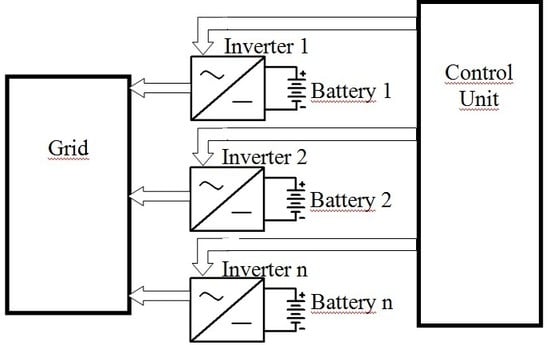Improved Efficiency Management Strategy for Battery-Based Energy Storage Systems
Abstract
:1. Introduction
2. Fundamentals of Proposed Management Strategy
- A distributed energy storage system used to provide flexibility grid services.
- A commercial energy storage system connected to a photovoltaic plant.
3. Proposed Management Strategy for Grid-Connected Distributed Energy Storage Systems
- Different energy storage systems distributed on the grid, for example, coupled to renewable energy sources or batteries of electric vehicles used in V2G modes;
- different modules of a modular storage system sized to achieve given maximum target values of output power and energy capacity.
4. Proposed Management Strategy for Grid-Connected Renewable Plants
- A SMA Sunny Island battery inverter (5 kWp);
- a 48 V–185 Ah Sonneschein battery.
- The storage system;
- a remotely controlled load;
- a computer implementing a LabView platform for the emulation of typical PV production and load profiles, as well as for the management of charging/discharging processes of the storage system.
- Traditional management, in which the battery is charged using all the instantaneous power generated from the PV plant exceeding the load, as well as load demand is satisfied entirely by the battery when there is no PV production;
- Maximum Efficiency (ME) strategy, in which battery charging power profile is selected to achieve maximum charging efficiency, as well as load demand in the absence of renewable power is satisfied by the most convenient mix of battery and grid power allowing to maximize discharging efficiency, in order to achieve the maximum overall roundtrip efficiency of the energy storage system.
- Scenario 1, characterized by typical PV and load profiles, in which battery charging is performed at the beginning of the PV production;
- scenario 2, in which overnight load is increased (for example to perform electric vehicle charging) and battery charging is performed during peak production hours.
- In the traditional approach, the charging power is limited only by both the PV production or the maximum absolute rating set by the manufacturer, and the charge process is carried out as soon as the PV production starts or is just shifted in time to match PV peak production and limit the PV power fed into the grid accordingly, whereas according to the ME strategy charging profiles are spread intelligently over the time taking into account also the impact of power on energy efficiency;
- in the traditional approach battery discharging profiles just follow the load profile until the battery is not fully discharged, where the ME approach allows to satisfy the instantaneous load demand with the most efficient mix of power coming from both the battery and the grid.
- In Scenario 1, ME allows a 6.7% relative increase of the storage roundtrip efficiency, coming from a 5.0% and an 1.3% energy savings during the charging and discharging phases, respectively;
- in Scenario 2, ME allows a 15.5% relative increase of the storage roundtrip efficiency, coming from a 11.4% and a 2.2% energy savings during the charging and discharging phases, respectively.
5. Conclusions
Author Contributions
Funding
Conflicts of Interest
References
- Liu, Q.; Chen, Z.; Wu, J.; Deng, Y.; Liu, K.; Wang, L. An Efficient Task Scheduling Strategy Utilizing Mobile Edge Computing in Autonomous Driving Environment. Electronics 2019, 8, 1221. [Google Scholar] [CrossRef]
- Arnieri, E.; Greco, F.; Boccia, L.; Amendola, G. A Reduced Size Planar Grid Array Antenna for Automotive Radar Sensors. IEEE Antennas Wirel. Propag. Lett. 2018, 17, 2389–2393. [Google Scholar] [CrossRef]
- Arnieri, E.; Salomon, A.M.; Amendola, G.; Boccia, L.; Paparo, M.; Scaccianoce, S. A preliminary study on a reduced size planar grid array for automotive radars. In Proceedings of the 2015 9th EuCAP European Conference on Antennas and Propagation, Lisbon, Portugal, 13–17 April 2015; pp. 1–4. [Google Scholar]
- Pevec, D.; Babic, J.; Podobnik, V. Electric Vehicles: A Data Science Perspective Review. Electronics 2019, 8, 1190. [Google Scholar] [CrossRef]
- Roberts, B.P.; Sandberg, C. The Role of Energy Storage in Development of Smart Grids. Proc. IEEE 2011, 99, 1139–1144. [Google Scholar] [CrossRef]
- Reka, S.S.; Dragicevic, T. Future effectual role of energy delivery: A comprehensive review of Internet of Things and smart grid. Renew. Sustain. Energy Rev. 2018, 91, 90–108. [Google Scholar] [CrossRef]
- Gilmore, E.A.; Apta, J.; Walawalkara, R.; Adamsa, P.J.; Lavea, L.B. The Air Quality and Human Health Effects of Integrating Utility-scale Batteries into the New York State Electricity Grid. J. Power Sources 2010, 195, 2405–2413. [Google Scholar] [CrossRef]
- Li, Y.; Feng, B.; Li, G.; Qi, J.; Zhao, D.; Mu, Y. Optimal distributed generation planning in active distribution networks considering integration of energy storage. Appl. Energy 2018, 210, 1073–1081. [Google Scholar] [CrossRef]
- Sortomme, E.; El-Sharkawi, M.A. Optimal Charging Strategies for Unidirectional Vehicle-to-Grid. IEEE Trans. Smart Grid 2011, 2, 131–138. [Google Scholar] [CrossRef]
- Geth, F.; Tant, J.; Haesen, E.; Driesen, J.; Belmans, R. Integration of Energy Storage in Distribution Grid. In Proceedings of the IEEE PES General Meeting, Providence, RI, USA, 25–29 July 2010. [Google Scholar]
- Soares, J.; Ghazvini, M.A.F.; Borges, N.; Vale, Z. A stochastic model for energy resources management considering demand response in smart grids. Electr. Power Syst. Res. 2017, 122, 599–610. [Google Scholar] [CrossRef]
- Ipakchi, A.; Albuyeh, F. Grid of the future. IEEE Power Energy Mag. 2009, 7, 52–62. [Google Scholar] [CrossRef]
- Viera, J.C.; Gonzalez, M.; Liaw, B.Y.; Ferrero, F.J.; Alvarez, J.C.; Campo, J.C.; Blanco, C. Characterization of 109 Ah Ni-MH batteries charging with hydrogen sensing termination. J. Power Sources 2007, 171, 1040–1045. [Google Scholar] [CrossRef]
- Wang, Z.M.; Li, C.Y.V.; Chan, S.L.I. Effect of electrolyte on electrochemical characteristics of MmNi3.55Co0.72Al0.3Mn0.43 alloy electrode for hydrogen storage. Int. J. Hydrog. Energy 2009, 34, 5422–5428. [Google Scholar] [CrossRef]
- Amoroso, F.A.; Cappuccino, G. Advantages of efficiency-aware smart charging strategies for PEVs. Energy Convers. Manag. 2012, 54, 1–6. [Google Scholar] [CrossRef]
- Amoroso, A.F.; Cappuccino, G. Impact of charging efficiency variations on the effectiveness of variable-rate-based charging strategies for electric vehicles. J. Power Sources 2011, 196, 9574–9578. [Google Scholar] [CrossRef]
- Shayestegan, M.; Shakeri, M.; Abunima, H.; Reza, S.M.S.; Akhtaruzzamanb, M.; Bais, B.; Sopian, S.M.K.; Amin, N. An overview on prospects of new generation single-phase transformerless inverters for grid-connected photovoltaic (PV) systems. Renew. Sustain. Energy Rev. 2018, 82, 515–530. [Google Scholar] [CrossRef]
- Aristiza’bal, A.J.; Gordillo, G. Performance monitoring results of the first grid-connected BIPV installation in Colombia. Renew. Sustain. Energy Rev. 2008, 33, 2475–2484. [Google Scholar] [CrossRef]
- Tolbert, L.M.; Peng, F.Z.; Habetler, T.G. Multilevel converters for large electric drives. IEEE Trans. Ind. Appl. 1999, 35, 36–44. [Google Scholar] [CrossRef]
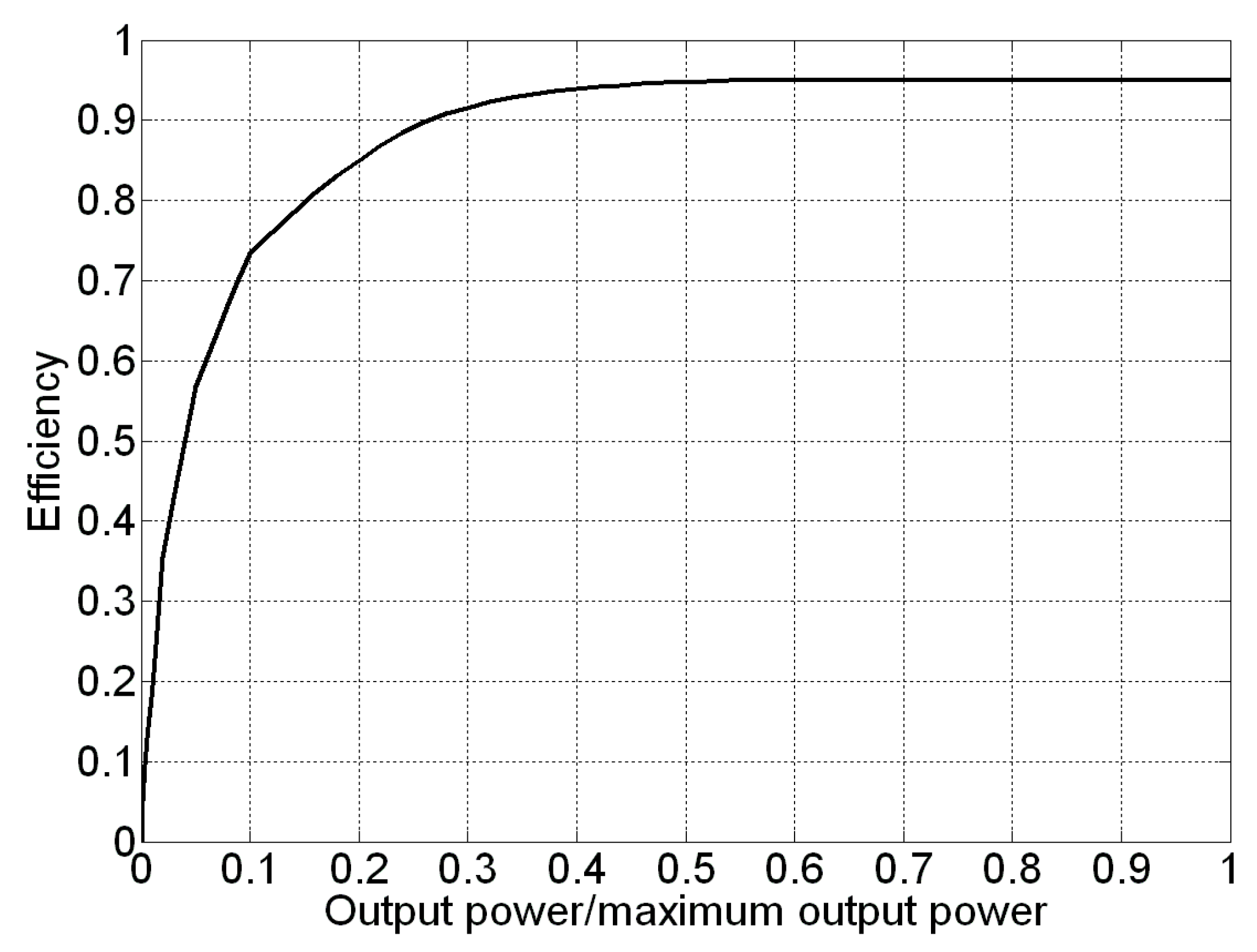
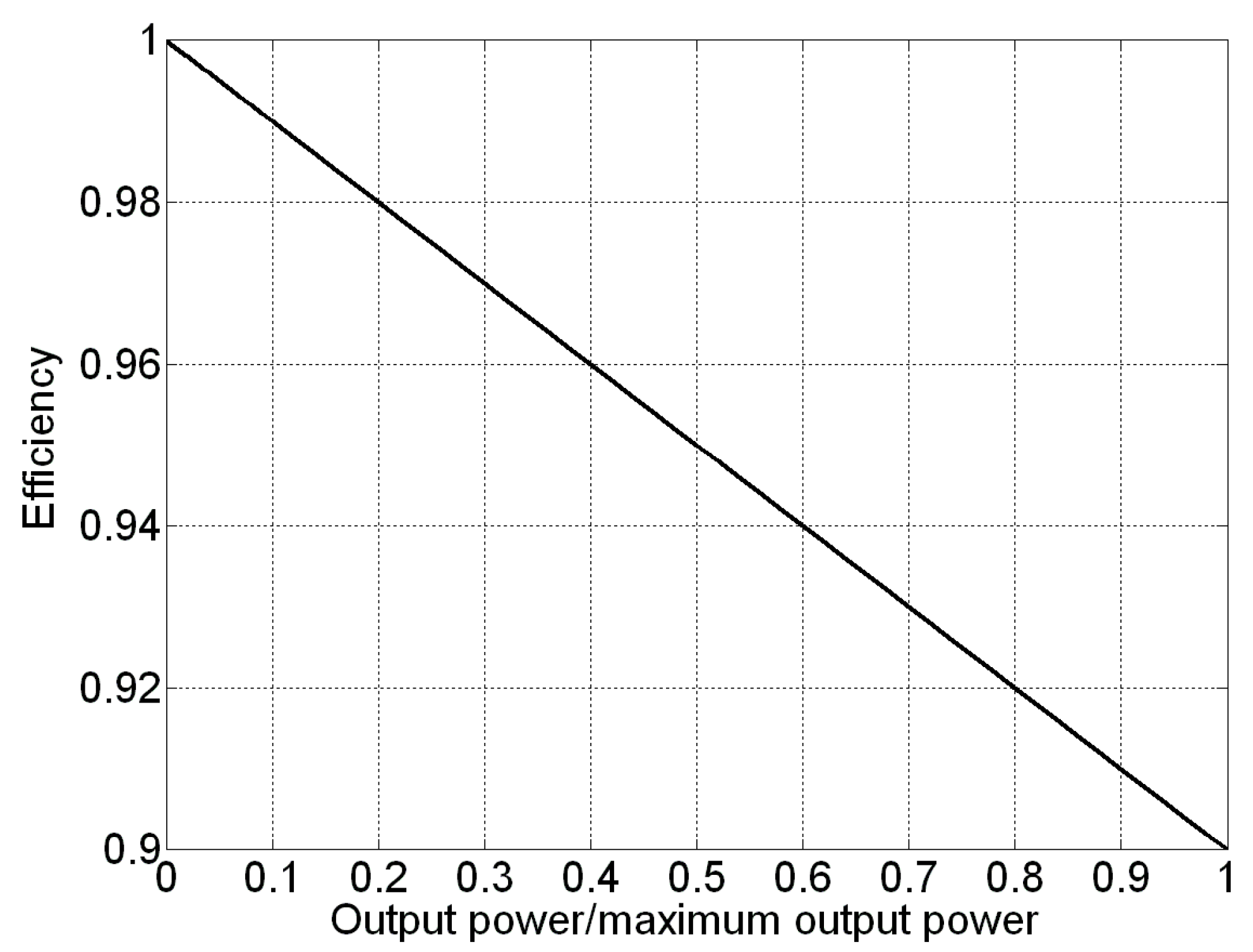
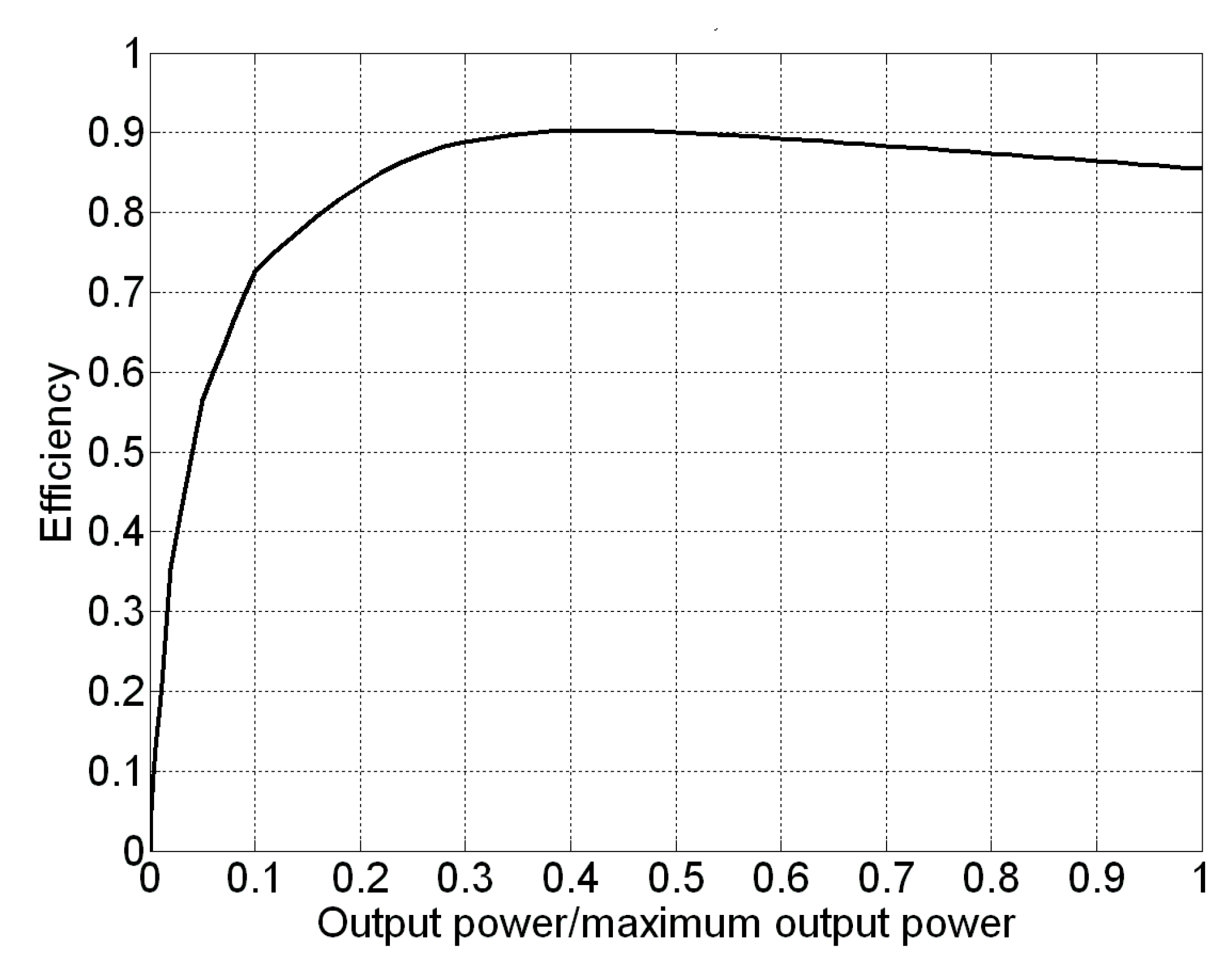
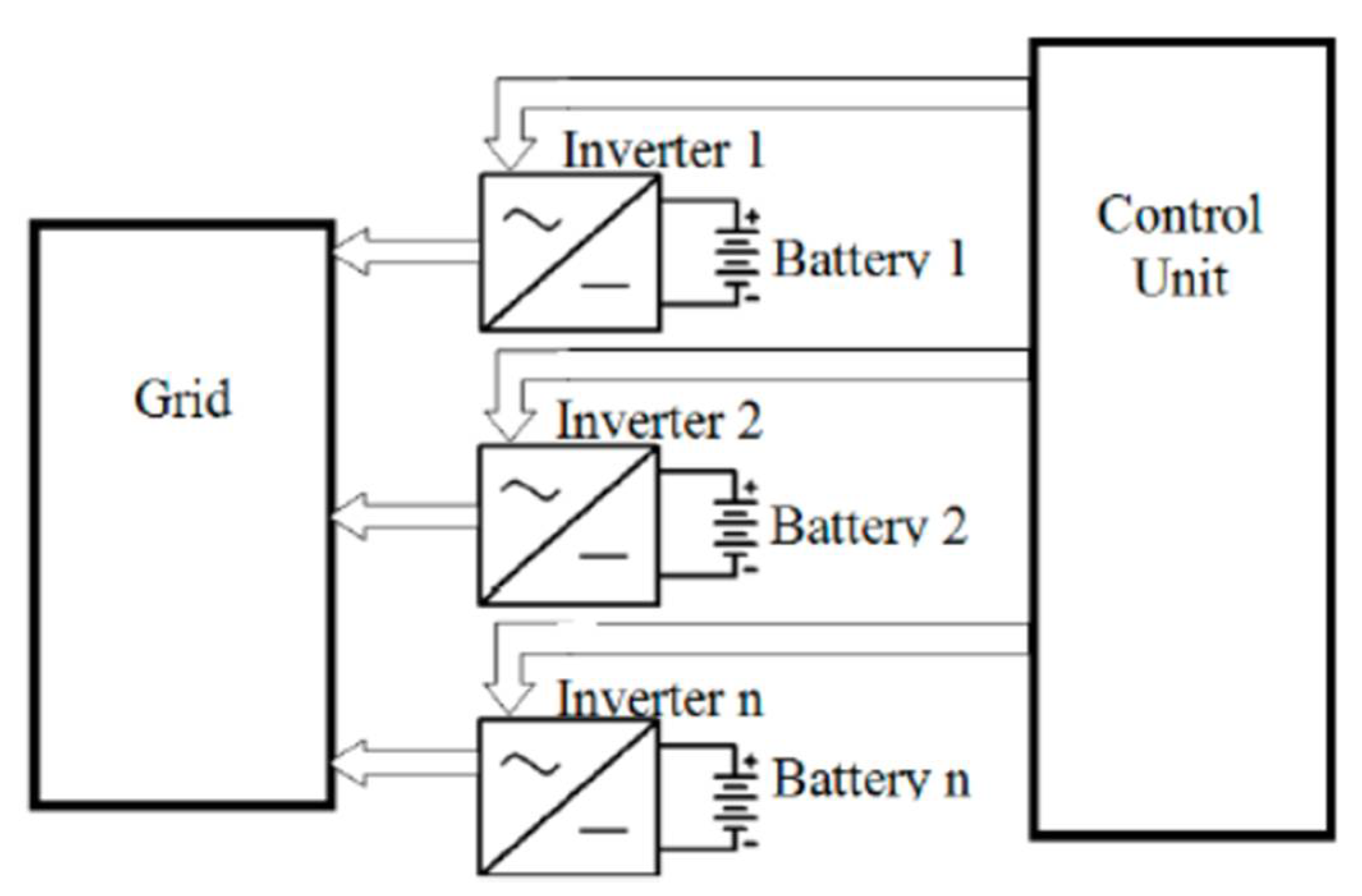
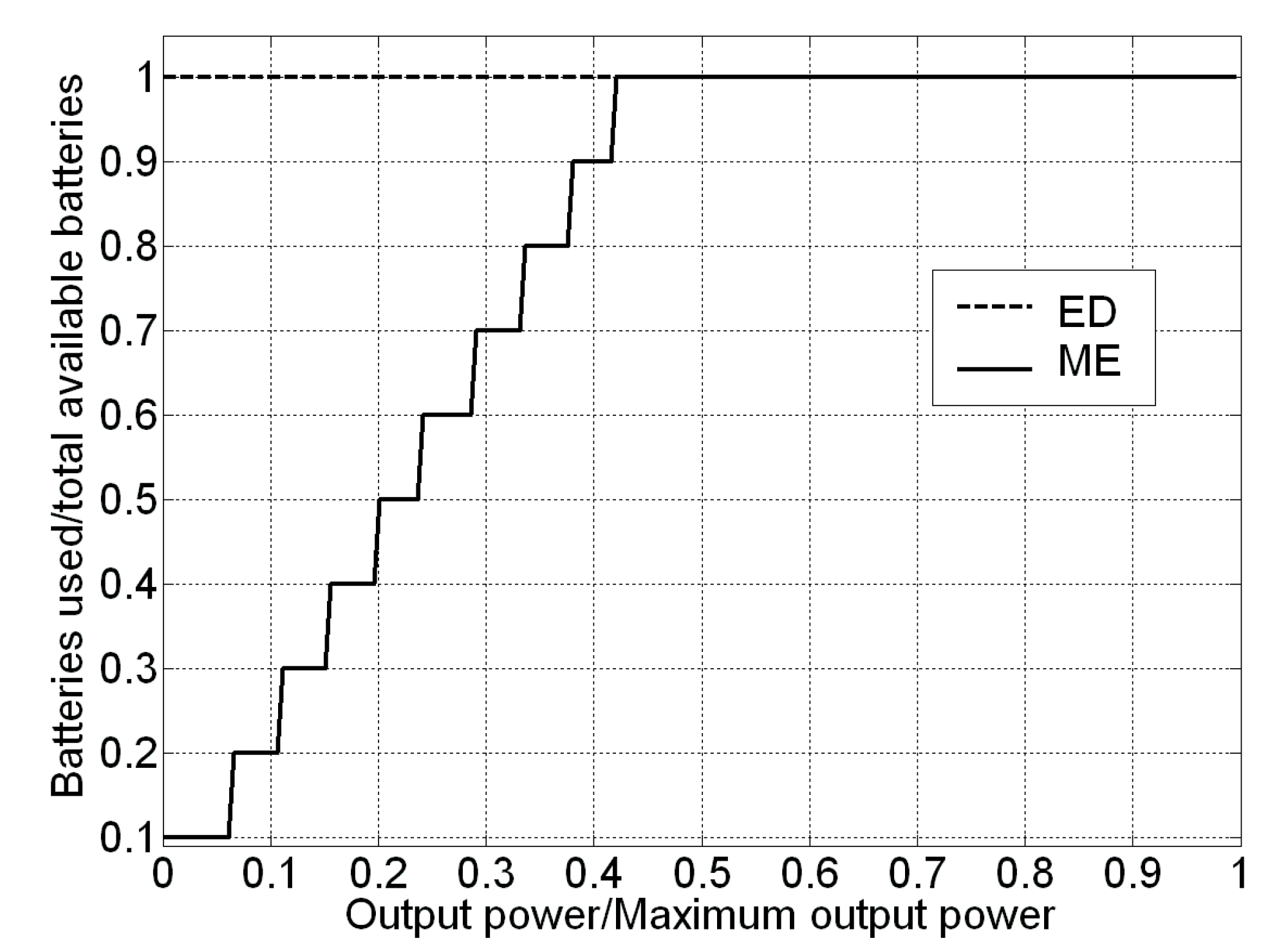


| Scenario | Parameter | Traditional | Me | Variation |
|---|---|---|---|---|
| SCENARIO 1 | Energy spent for storage charging | 3.03 kWh | 2.88 kWh | −5.0% |
| Energy supplied during storage discharging | 2.27 kWh | 2.30 kWh | +1.3% | |
| Roundtrip efficiency | 74.9% | 79.9% | +6.7% | |
| SCENARIO 2 | Energy spent for storage charging | 3.25 kWh | 2.88 kWh | −11.4% |
| Energy supplied during storage discharging | 2.25 kWh | 2.30 kWh | +2.2% | |
| Roundtrip efficiency | 69.2% | 79.9% | +15.5% |
© 2019 by the authors. Licensee MDPI, Basel, Switzerland. This article is an open access article distributed under the terms and conditions of the Creative Commons Attribution (CC BY) license (http://creativecommons.org/licenses/by/4.0/).
Share and Cite
Arnieri, E.; Boccia, L.; Amoroso, F.; Amendola, G.; Cappuccino, G. Improved Efficiency Management Strategy for Battery-Based Energy Storage Systems. Electronics 2019, 8, 1459. https://doi.org/10.3390/electronics8121459
Arnieri E, Boccia L, Amoroso F, Amendola G, Cappuccino G. Improved Efficiency Management Strategy for Battery-Based Energy Storage Systems. Electronics. 2019; 8(12):1459. https://doi.org/10.3390/electronics8121459
Chicago/Turabian StyleArnieri, Emilio, Luigi Boccia, Francesco Amoroso, Giandomenico Amendola, and Gregorio Cappuccino. 2019. "Improved Efficiency Management Strategy for Battery-Based Energy Storage Systems" Electronics 8, no. 12: 1459. https://doi.org/10.3390/electronics8121459
APA StyleArnieri, E., Boccia, L., Amoroso, F., Amendola, G., & Cappuccino, G. (2019). Improved Efficiency Management Strategy for Battery-Based Energy Storage Systems. Electronics, 8(12), 1459. https://doi.org/10.3390/electronics8121459





